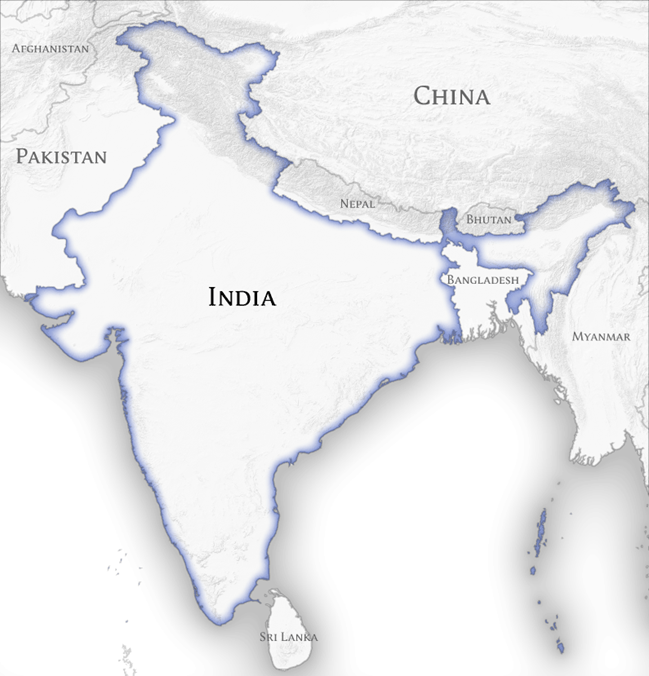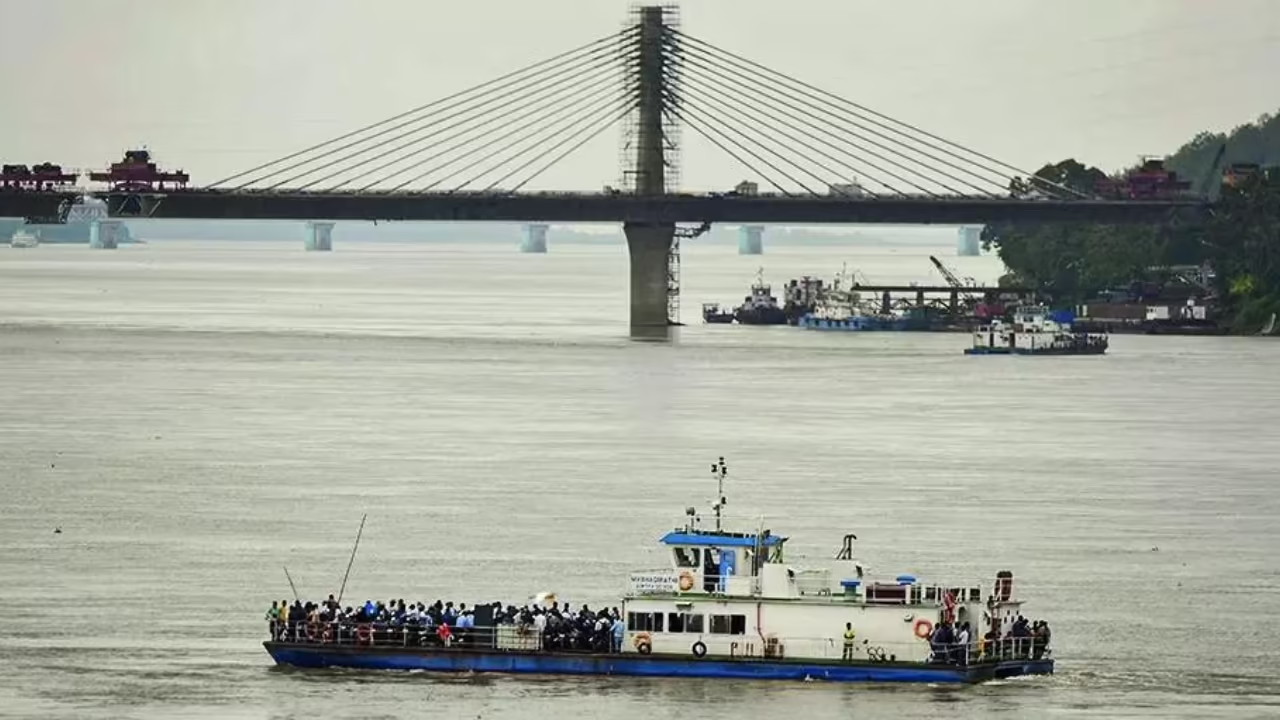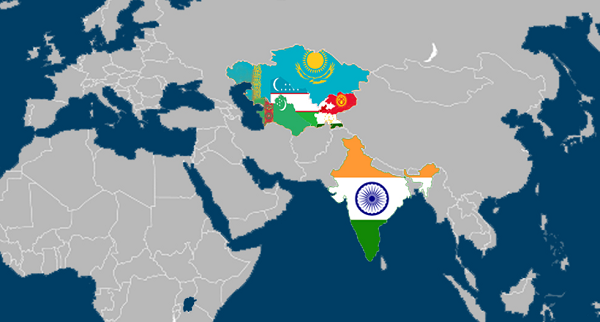- Courses
- GS Full Course 1 Year
- GS Full Course 2 Year
- GS Full Course 3 Year
- GS Full Course Till Selection
- MEP (Mains Enrichment Programme) Data, Facts
- Essay Target – 150+ Marks
- Online Program
- GS Recorded Course
- NCERT- First Ladder
- Polity
- Geography
- Economy
- Ancient, Medieval and Art & Culture AMAC
- Modern India, Post Independence & World History
- Environment
- Governance
- Science & Technology
- International Relations and Internal Security
- Disaster Management
- Ethics
- Current Affairs
- Indian Society and Social Issue
- CSAT
- 5 LAYERED ARJUNA Mentorship
- Public Administration Optional
- ABOUT US
- OUR TOPPERS
- TEST SERIES
- FREE STUDY MATERIAL
- VIDEOS
- CONTACT US
India's Role in South Asia
India's Role in South Asia

Background:
1. Political Instability in Bangladesh:
- Current Situation: The resignation of Prime Minister Sheikh Hasina amid widespread protests and military interim governance.
- Implications for India: India must balance its support for democratic processes in Bangladesh while maintaining strategic and economic interests. This is crucial as any instability may affect bilateral relations and regional security.
- Historical Parallel: The 2006 Nepalese democratic movement, where India had to support democratic aspirations while ensuring regional stability.
2. South Asia's Geopolitical Landscape:
- Evolving Dynamics: The region’s political and economic instability requires India to adopt a nuanced, pragmatic approach to diplomacy, taking into account shifting alliances and local conditions.
Key Issues in South Asia:
1. Military Interference in Civilian Governance:
- Pakistan: Military has ruled for nearly half of the country’s history. Persistent tensions with India over Kashmir and cross-border terrorism continue.
- Myanmar: The 2021 military coup resulted in widespread unrest and a deteriorating human rights situation.
- Bangladesh: Historical military interventions have led to political instability, notably in 2007-2008, with ongoing implications for current governance.
2. Economic Vulnerabilities:
- Sri Lanka: Severe economic crisis with record external debt, exacerbated by political instability and dependency on foreign aid.
- Bangladesh: Heavy reliance on the garment industry (80% of exports) makes it vulnerable to global market fluctuations.
- Maldives: Economic dependence on tourism (28% of GDP), exposed to external shocks like the Covid-19 pandemic.
- Pakistan: Significant external debt (USD 130.6 billion), with 30% held by China, creating potential for economic leverage by Beijing.
3. Geopolitical Competitions and External Influences:
- China-Pakistan Economic Corridor (CPEC): Enhances Chinese influence in Pakistan through significant infrastructure investments.
- Hambantota Port (Sri Lanka): Handover to China on a 99-year lease due to debt, reflecting economic dependencies translating into strategic concessions.
- Nepal: Balancing between Indian and Chinese interests, with projects like the Pokhara International Airport funded by China.
4. Climate Change and Environmental Challenges:
- Maldives: Rising sea levels threaten its existence as 80% of its land is less than 1 meter above sea level.
- Bangladesh: Expected to have 13.3 million internal climate migrants by 2050 due to flooding and sea-level rise.
- Pakistan: 2022 floods caused widespread devastation and high economic losses.
- Nepal: Rapid glacier retreat affecting water security for millions.
5. Colonial Legacies and Fragile Institutions:
- Radcliffe Line: The 1947 border demarcation continues to fuel India-Pakistan conflicts and other regional disputes.
- Democracy Index 2020: Most South Asian countries are classified as "flawed democracies" or "hybrid regimes," indicating ongoing political instability.
6. Demographic Pressures:
- Youth Unemployment: High rates among youth, such as 20.5% in Nepal and 24.74% in Sri Lanka, creating social and economic pressures.
Current Major Challenges for India:
|
Country |
Issues |
|
Pakistan |
Ongoing Issues: Tensions over Kashmir, cross-border terrorism, economic instability, and increased Chinese influence through CPEC. Recent Developments: Terrorist attacks in Jammu’s Reasi district reportedly linked to Pakistani sponsorship. |
|
Bangladesh |
Political Upheaval: Prime Minister’s resignation and military interim governance may impact India-Bangladesh relations. Key Concerns: Water-sharing issues (Teesta River), illegal migration from Bangladesh, and potential rise in migration pressures due to unrest. |
|
Nepal |
Political Instability: Frequent government changes affecting policy stability. Economic Ties with China: Growing investments through the Belt and Road Initiative. Border Disputes: Ongoing issues like the Kalapani dispute. |
|
Sri Lanka |
Economic Assistance: India’s crucial support in debt restructuring and financial aid. Bilateral Issues: Katchatheevu island dispute, treatment of Tamil minorities, and implementation of the 13th Amendment. |
|
Maldives |
Foreign Policy Shift: Recent pro-China leadership, leading to calls for reduced Indian military presence and a shift in regional policy dynamics. |
|
Myanmar |
Strategic Concerns: Rohingya refugee influx, increased Chinese influence, and balancing human rights with strategic interests. |
|
Bhutan |
Evolving Relations: Bhutan’s efforts to diversify foreign relations and reduce economic dependence on India. Strategic Concerns: The unresolved Doklam issue involving Bhutan, India, and China. |
|
Afghanistan |
Taliban Return: Impact on Indian investments and influence, though India maintains cordial relations through humanitarian aid and cricket diplomacy. |
India’s Resilience Amidst Regional Turmoil
1. Constitutional and Institutional Strength:
- Democratic Framework: The Constitution’s robustness and the basic structure doctrine safeguard democratic values.
- Independent Judiciary: Acts as a check on executive power, ensuring accountability.
- Election Commission: Conducts free and fair elections, managing the world’s largest democratic exercise.
2. Vibrant Civil Society and Free Press:
- Civil Society: Active participation in democratic processes and policy influence.
- Free Press: Despite challenges, India has a diverse media landscape and significant internet penetration for information dissemination.
3. Apolitical Armed Forces:
- Civilian Control: Indian armed forces maintain an apolitical stance and focus on national security and disaster response under civilian authority.
4. Federal Structure and Decentralization:
- Regional Autonomy: Federalism allows for regional governance and policy experimentation, accommodating diverse regional needs and demands.
5. Political Alternation and Multiparty System:
- Democratic Health: Peaceful transfer of power through elections, with a multiparty system ensuring diverse political representation.
6. Economic Liberalization and Middle-Class Growth:
- Economic Reforms: Liberalization since 1991 has fostered a growing middle class, contributing to political and economic stability.
7. Managing Divergent Interests:
- Negotiation and Integration: Addressing regional aspirations and separatist movements through political means rather than solely military solutions.
Measures for Enhancing Relations with Neighbors:
|
Measure |
Details |
|
Connectivity Initiatives |
Projects: Accelerate the BBIN Motor Vehicles Agreement, India-Myanmar-Thailand Trilateral Highway, and establish more Integrated Check Posts (ICPs). Digital Connectivity: Expand regional digital infrastructure through projects like the South Asian Satellite. |
|
Economic Strategy |
Trade Focus: Shift from aid to trade with the Neighborhood First Economic Zone and joint economic zones to stimulate regional economic growth. |
|
Cultural and Soft Power |
Cultural Diplomacy: Enhance cultural ties through scholarships, cultural centers, and promote cross-border tourism and Bollywood. |
|
Disaster Diplomacy |
Regional Response: Establish a South Asian Disaster Response Force with shared early warning systems and disaster management mechanisms. |
|
Multilateral Mediation |
SAARC: Focus on non-controversial areas like climate change, public health, and education. Encourage Track II diplomacy and think tank collaborations. |
|
Green Diplomacy |
South Asian Green Alliance: Lead regional climate action through clean technology sharing, climate-resilient agriculture, and green hydrogen technology. |
|
Sports Diplomacy |
South Asian Games: Revive and expand sports events, establish a development fund, and offer training facilities and coaching to neighboring countries. |
Conclusion:
India's role in South Asia is marked by the need to navigate complex political landscapes while fostering regional stability and cooperation. By leveraging connectivity, economic strategies, cultural diplomacy, and regional initiatives, India can enhance its relationships with neighboring countries and contribute to regional prosperity.
Must Check: Best IAS Coaching In Delhi
UPSC Prelims Result 2024 Out: Expected Cut Off & Other Details, UPSC Prelims 2024 Answer with Explanation, Daily Prelims Quiz, Daily Current Affairs, MONTHLY CURRENT AFFAIRS TOTAL (CAT) MAGAZINE, Best IAS Coaching Institute in Karol Bagh, Best IAS Coaching Institute in Delhi, Daily Mains Question Answer Practice, ENSURE IAS UPSC Toppers, UPSC Toppers Marksheet, Previous Year Interview Questions, UPSC Syllabus




